E-Granthalaya, User Studies, Library 2.0
E-Granthalaya for KV Libraries
E-Granthalaya: A digital agenda for Library Automation and Networking (eG-3), the dynamic library management and networking software from NIC is entering the KVs in a big way. There was a two day hands on training programme on the software at the In service course going on at KVS ZIET Mysore. KV Librarians have been looking for a uniform software for all the KVs in the country for the last many years and if the E-Granthalaya can fulfil the requirements, it will revolutionise the libraries and boost up its prospects as Global learning points in the near future.
Mr. P. S. Bhat, Technical Director, Ms. Rashni, Programmer (NIC Bangalore) Sh. P A Devaraj, Principal System Analyst and Ms. Shilpa, Field Engg. (NIC Mysore) conducted the training.
The participants are planning to find out and report the components needed in the software to function in KV libraries.
We are grateful to the Course Director, Sh. S.M.Saleem and NIC Technical Director, Sh. Ram Kumar Matoria for taking the initiatives.
In-service Course begins at ZIET Mysore
The second phase of In-service course for Librarians (Batch-I) began ET Mysore on 22 March 2010. The course was formally inaugurated by Director, Shri. S. M.Saleem. Ass. Director, Smt. Ruby Huria welcomed the participants.
The course will end on 28 March 2010.
On the first day, after the inaugural session PRE-Test was conducted.
Afternoon session was taken by the Resourse Person, Shri. S.L.Faisal on Library Advocacy Programme, followed by Library Promotional and Publicity Tools. The participants were given with group-wise assingment on publishing library bulletins/newsletters and library guides.
For Live reporting visit, KV Librarian’s Network
The Children We Serve
By Virginia A. Walter
(http://americanlibrariesmagazine.org/features/09232009/children-we-serve )
Five notions of childhood suggest ways to think about the services we provide
In Children and Libraries: Getting It Right (ALA Editions, 2001), I proposed three alternative visions for the children we would be serving as we moved into the 21st century: the original notion of the child reader, an idea that inspired and guided the founders of library service to children; the child of the information age; and the child in the community. It’s now time to revisit those three concepts and look at two additional notions of childhood that might usefully inform our thinking today. These new ideas are “the global child” and “the empowered child.”
Each of these five concepts of the child leads to a different approach to library service. All are plausible, all are hopeful, and all are obtainable. They may not be mutually exclusive, but each is based on a different understanding of the child who will shape and claim the future of the 21st century.
The Child as Reader
The library for the child reader is the vision that offers the most continuity with the past. It builds on the core values and visions of the librarians who founded library services for children in this country. It is consistent with the niche that these services have traditionally occupied. It is therefore a conservative vision, in the sense that it conserves a cherished and valued tradition.
As we think about the future of library service to children, however, we must look at even our most cherished and valued traditions to see how they hold up against today’s realities. Can we be sure that books and reading will continue to be valued by our society? Will parents, educators, and policymakers continue to believe that books and reading are essential to the healthy development of children? Will voters agree that providing books and promoting reading for children are appropriate and necessary functions for tax-supported public libraries? I am writing these words during the worst economic recession our country has known for decades, when even the most basic government services are threatened. Will we librarians be able to make a case for the importance of books and reading in the lives of children? It has been interesting to observe the profession’s effort to build a rational foundation for our reading mission. I have previously written about our faith in a deeply held but unproven belief in the power of reading “good” books as a means of improving human nature and presumably human behavior.
However, the world we operate in now seems to require something more, and children’s librarians have dutifully looked for research findings that bolster their claims of doing good work and providing meaningful service.
One of the more significant initiatives has been “Every Child Ready to Read” (ECRR), a joint initiative by two American Library Association divisions, the Association for Library Service to Children and the Public Library Association, to educate parents and caregivers in techniques they can use to transfer critical emergent literacy skills to their preschool children. The association leaders responsible for the original program drew on research findings from the National Reading Panel and even hired academics with impeccable credentials to design the workshop curricula. Not satisfied with that, they commissioned a research study to determine whether the researchbased curriculum achieved its desired learning and behavior outcomes. The study showed that parents of every age, educational background, income level, and ethnicity who attended the ECRR workshops significantly increased those behaviors that research has shown stimulate reading readiness in young children. So we’re feeling like we’re on pretty solid ground here, at least in our efforts to improve literacy in young children. The big lesson we learned is that we can’t do this job alone; we need to enlist caregivers and especially parents as the child’s first and best teachers.
The Child of the Information Age
Computers, with their access to myriad digital resources, have already changed the way we deliver many of our services to children. Children of the information age-boys in particular-have breached the walls and claimed their right to computers and the internet. Never mind that they do not have all the rights that adult library patrons do; many, perhaps most, libraries use filtering software to screen content on computers in the children’s room. Most young patrons probably don’t care as much as we intellectual freedom advocates do; they are not there to access forbidden websites. They may not even want to access information sites at all. Mostly, librarians tell me and my own observations confirm, they want to play games.
We children’s librarians tend to be a little dismissive of those computer and video games, unlike our colleagues in young adult services. Sometimes it seems that the best rationale we can offer for this activity is that we encourage reading for pleasure. Why not computing for pleasure? We should probably pay more attention to voices like that of Steven Johnson, who claimed in his book Everything Bad Is Good for You (Riverhead, 2005) that computer games place heavy cognitive demands on their players. In fact, much of these games’ captivation is due to the challenges they place on individuals to persist in their efforts to solve complex challenges. In Got Game: How the Gamer Generation Is Reshaping Business Forever (Harvard Business School Press, 2004), John C. Beck and Mitchell Wade go even further. They insist that the hours spent playing video games have given young people now entering the workforce some unique and badly needed skills: an ability to multitask and a willingness to take risks. Those 10-year-old boys clustered around a computer in your children’s room arguing about the best strategy for knocking out an opponent’s avatar may be engaged in the same kind of reasoning 20 years from now in some corporate boardroom.
However, access is only part of the problem. The other two issues that we need to think hard about are content and education for information literacy. And if we are going to fully realize the potential of this marvelous device that computer scientist Seymour Papert called “the children’s machine,” we also need to consider how we are going to integrate computers and digital resources into our services and collections.
The Child in the Community
Although the founders of library service to children designed their services to promote books and reading, they still understood the importance of their young patrons’ environment. Librarians working in rural areas pondered schemes to bring books to children in remote farmhouses far from the nearest library. Urban librarians were concerned about crowded tenements and unsafe sweatshops where children labored for pennies. In a speech to ALA in 1905, Frances Jenkins Olcott, then head of the children’s department of the Carnegie Library of Pittsburgh, talked about the demographics of her city, where more than two-thirds of the total population of 321,616 were “either foreign born, or children of foreign born parents, and persons of negro descent.” Olcott was knowledgeable about the employment opportunities, the housing conditions, and the curriculum of the public schools. She knew the city inside and out, and she understood what living there was like for children.
Olcott knew that the Carnegie Library was reaching thousands of children through its branches and through the city schools. She worried about the large numbers of children who didn’t come into the library and were not enrolled in school. She did not abandon these at-risk children. She organized an initiative that cooperated with “institutions for social betterment,” such as social settlements, the juvenile court, and the Newsboys’ Home. Library staff established home libraries—small cases of books—in working-class homes. During home visits, librarians would gather a group of children from the neighborhood and talk about the books, read aloud, tell stories, and organize crafts such as sewing or basketry.
Outreach or social work? Librarians sometimes embrace the first activity and shun the second. Yet when they truly begin to plan and implement programs that take into account the communities in which children live, the lines tend to blur. Traditional library missions may expand when we go beyond superficial marketing studies or environmental scans and really dig for insights into our communities.
We will rarely find those useful insights if we stay sequestered behind the walls of our library buildings. I understand the competing demands of reference desk schedules, storytimes, and staff meetings. In spite of those very real constraints, time must be found for walking in the footsteps of the children and families whom we serve.
The Global Child
The world feels more interconnected all the time. The increasing urgency of global warming has alerted us to both the fragility and the importance of those connections.
Our economic system is now international as well. Banks fail in New York, and stock markets in Japan, Hong Kong, and Europe shudder along with our own. And sadly, war continues to remind us that we are all citizens of one world. In addition, the United States continues to attract immigrants from all over the world.
It is no longer unusual to find large urban school districts in cities that serve as ports of entry for new immigrants where the number of languages spoken in the homes of the students exceeds 50. In my own city of Los Angeles, these languages include the mostly oral dialects spoken by indigenous people from Central America as well as the more familiar Spanish, Korean, Mandarin, Thai, Filipino, and Armenian. For the children of these newcomer families, the country of origin remains an important influence. It is easy to see that the children whose families maintain their international connections are living in a global village. I suggest that other children, like my grandchildren who are now fourth-generation Americans, are also residents in one global village. The ecological and economic and geopolitical realities of the 21st century place them there. The library can help prepare them to be more competent and compassionate global citizens.
Our materials collections serve us well as a resource in this endeavor. I still have the copy of Paul Hazard’s 1944 book Books, Children, and Men that I bought when I was in library school. I was taken with his notion of the world republic of childhood. This French scholar wrote eloquently about the capacity of books to connect children to one another across national borders.
Books in languages other than English are most likely to be found in children’s collections serving large immigrant populations. They are well used by children who haven’t learned English yet and by families who hope to keep the mother tongue alive even as the children become fluent in English. I have found, however, that even monolingual American children are intrigued with books in other languages. They are especially fascinated by different alphabets. I’m not sure what an American child learns about Japan when she leafs through a Japanese picture book, but it can’t hurt to be exposed to the notion that not everybody reads from left to right in the Roman alphabet.
If we begin to think of the American children we serve as citizens in the world republic of childhood who will grow up to be decision makers in an increasingly interconnected global village, we also add another critical dimension to our understanding of contemporary childhood.
The Empowered Child
Children have little legal power. They are dependent on their parents by law and in practice. They may depend on their parents to sign them up for soccer or to take them to the library. Even ALA, whose Library Bill of Rights asserts that “a person’s right to use a library should not be denied or abridged because of origin, age, background, or views,” affirms the right and responsibility of parents to guide their own children’s use of the library and its resources and services.
Given this legal and social reality, what is the justification for empowering children? Why should librarians be advocates for children’s rights? In an essay in Rethinking Childhood (Rutgers, 2003), Barbara Woodhouse proposes that we recognize two categories of rights especially for children-needs-based rights and dignity-based rights.
Needs-based rights would include positive rights to nurturance, education, medical care, and other goods and services that children need to develop into productive adults. Dignity-based rights, on the other hand, recognize that children are fully human from the time of their birth. Dignity-based rights reflect both the inherent dependence and fragility of children and their developing capacity for participation in decisions that affect their lives. Woodhouse identifies five principles of human rights that could and should be applied to children:
- The equality principle: the right to equal opportunity
- The individualism principle: the right to be treated as a person, not an object
- The empowerment principle: the right to a voice and, sometimes, a choice
- The protection principle: the right of the weak to be protected from the strong
- The privacy principle: the right to protection of intimate relationships
This framework resolves much of the tension that has plagued the issue of children’s rights. It acknowledges the child’s right to protection as well as the child’s right to autonomy. Librarians can contribute to this framework a principled defense of children’s right to information and the active dissemination of the information that children need in order to exercise their other rights We can work even harder than we do now to ensure that the library operates in the best interest of children; we have a long tradition of advocacy; and advocacy, along with public relations and networking, is one of the seven core competencies for children’s librarians put forth by ALSC.
One important document that deserves our attention is the United Nations Convention on the Rights of the Child as a framework for guiding their work. This document, adopted by the United Nations in 1989, has been ratified by every country in the world except Somalia and the United States. It is a remarkable international consensus on the civil, political, economic, social, and cultural rights of children. It covers just about every aspect of children’s lives, and it emphasizes respect for children’s dignity. It manages to avoid focus on either protection or self-determination for children, the usual opposing viewpoints, and instead promotes liberty, privacy, and nurturance.
The child as reader, the child of the information age, the child in the community, the global child, or the empowered child? Which child will we target as we plan and deliver library services in our communities? Better yet, can we strive to target them all?
Courtesy: http://americanlibrariesmagazine.org/features/09232009/children-we-serve
International Conference on Children’s Libraries 2010
The conference held at New Delhi from 4-6 February 2010. Sixteen Librarians representing different regions participated in the conference.
2nd Spell In-service course for Librarian (Batch 1) from 22 to 28 March 2010 @ ZIET Mysore
The second spell of 7 day in service course for Librarians will be held at ZIET Mysore from 22-28 March 2010. Thirty Nine librarians from Five KVS Regions (Chandigarh, Delhi, Dehradun, Kolkata and Jammu) are attending the course.
The copy of the invitation letter and the list of the participants are given below.
For more information visit KV Librarians’ Network
KV Librarians’ In-service course (Batch III) starts at ZIET Mysore
The Twenty One day’s In-service course of the third batch of KV Librarians from five Regions (AHMEDABAD, BANGALORE, BHUBANESWAR, CHENNAI, HYDERABAD) began at the KVS Zonal Institute of Education and Training , Mysore on 16th November 2009. Fifty Nine Librarians attending the training programme. The course will end on 6th December 2009.
Inaugural ceremony
Photo courtesy: Mr. Sangam Sreenivasulu, Librarian, KV Kurnool
For live coverage visit http://kvlibrarians.ning.com/
KV Librarian’s In-service course (Batch III) starts at ZIET Mysore
The Twenty One day’s In-service course for the third batch of KV Librarians from five Regions (AHMEDABAD, BANGALORE, BHUBANESWAR, CHENNAI, HYDERABAD) began at the KVS Zonal Institute of Education and Training , Mysore on 16th November 2009. The course will end on 6th December 2009.
Tough Love: An Open Letter to Kids’ Book Publishers
This open letter by Diantha McBride published in School Library Journal expresses real concerns of School Librarians around the world.
Read and find.
Dear Publishers:
I’m a school librarian. During the past 30 years, I’ve worked with children and young adults from ages 3 to 18 (not to mention teachers, families, administrators, lecturers, and visiting authors), and I’ve read a lot of books. Because there are so many kids’ books being published these days, I’m not expecting total perfection. Still, there are many things I wish publishers would do differently, things that could make your books much better. Here are my top 10 suggestions.

Illustrations by Elwood H. Smith
1. Bulk up those bindings.
Ohmigosh, where to start? First, the good news: I have books in my library that have held up just fine for more than 20 years. On the other hand, I’ve seen new titles self-destruct the second our cataloger opened them! I know it’s unrealistic to expect every volume to circulate 100 times before its binding crashes. But are 10 readings too much to hope for? And, please, don’t bring up library bindings. There’s not a single library on Earth that has only library bindings in its collection. Bottom line? Nobody should be offered a book that falls apart on the first reading—and what’s with those irregularly cut pages?
2. Better editing.
It’s time to tighten up those stories. Unless you’re publishing Madame Bovary or The Brothers Karamazov, 200 pages is plenty. And, yes, I know all about “Harry Potter” and “Redwall,” two series that successfully exceed that limit. But they’re not the norm. And if a hefty book isn’t super popular, its length can easily overwhelm many young readers. Plus, long novels often smack of assigned reading—even for middle school and high school students. Still not convinced that less is more? Consider these relatively thin titles: From the Mixed-Up Files of Mrs. Basil E. Frankweiler (167 pages), Charlotte’s Web (184 pages), Charlie and the Chocolate Factory (155 pages), The Adventures of Captain Underpants (128 pages), Casino Royale (181 pages), Of Mice and Men (118 pages), and A Separate Peace (196 pages). I rest my case.
3. Give that cover a makeover.
I’m sorry if this hurts your feelings, but far too many book jackets (I won’t name names) are just plain ugly. That’s the only word for it. I’d suggest that you recruit some real live fourth graders to review your mock-up covers before you make any final art decisions. Even adults judge a book by its cover. So you can’t expect kids to pick up one that looks dull, dull, dull. What kind of covers appeal to students? The kids that I talked to like jackets with animals (puppies are popular). But covers with enigmatic images (you know, the ones that no one can figure out what they’re a picture of) or dreamy, mysterious images (read: snoozer) are a tough sell. If kids are turned off by a cover, they’re bound to reject the title no matter how great my book talk is. And while we’re talking about covers…. Please, no more stupid titles like Fair Has Nothing to Do With It (Farrar, 2007), How Could You Do It, Diane? (Clarion, 1989), and Does My Head Look Big in This? (Orchard, 2007). Really now.
 4. Where’s the art information?
4. Where’s the art information?
Every year I buy 400 to 600 picture books for our library. Here’s what I’d like to see in each one of them: information that describes the medium used by the illustrator. I recently took a truckful of books that were waiting to be shelved and went through about 100 of them at random. Guess what? Only 20 included that type of information. And when I looked at a stack of Caldecott winners (which I use with our second graders), it was even worse: only one in 20 included art information. Since I’m always teaching students about how illustrators work, it would be nice to be able to open any picture book—whether we’re studying frogs, dinosaurs, dragons, or holidays—and find out what the artists used to create their images. Oh, and one more thing. Please, no more picture books with characters named Arthur—and no more mice.
5. More boy books.
I’m afraid this won’t be popular, but I need more books for boys—as do most librarians who work with young people. I’ve noticed that lots of books with female characters aren’t really about being female. In fact, in many cases, the main characters could just as easily have been males—and that would make my job a lot easier. Our young guys love Anthony Horowitz’s “Alex Rider” series (Philomel), Dav Pilkey’s stuff, and Jonathan London and Frank Remkiewicz’s “Froggy” books (Viking). But a novel like Ann Halam’s Siberia (Random House, 2005) could have included a male protagonist. (Sorry, Ann, but it’s true.) And Gloria Whelan’s The Impossible Journey (HarperCollins, 2003) could have featured an older brother and a younger sister—instead of 13-year-old Marya and her younger brother, Georgi. Am I being silly? Probably, but some of our boys have never read a complete book in their lives. It’s important to offer them good, appealing stories, and, sad to say, that means stories with prominent male characters.
 6. Thanks, but no tanks.
6. Thanks, but no tanks.
I’m almost sorry to make this next suggestion (but not quite!): put a moratorium on children’s and young adult novels about World War II, please! My library already has 162 war novels. No other period of history comes close, not even the Middle Ages, another hugely popular period (with novelists anyway). We own dozens of books on the Holocaust and death camps, Japanese internment, battles and bombs, hiding and starving. Enough, I say… at least for awhile. Do I hear some publishers whispering that since I buy our library’s books, I should simply select something else? I would, if there was anything else to buy. And are you suggesting that authors like to write about WWII? Well, calling all authors: pick a new historical period for a change. There’s plenty of relatively unexplored territory. Our library, for example, has only one novel about the Byzantine Empire (it’s Tracy Barrett’s Anna of Byzantium [Delacorte, 1999], and I love it). And Caroline Lawrence’s series of Roman mysteries (Roaring Brook) is incredibly popular with our kids. (OK, she did visit our school, but that’s not the only reason her books are such a hit.) Let’s have more novels about ancient Greece or India or China or Thailand, more stories about medieval times in areas other than Europe.
7. Indexes are essential.
If you’re publishing a nonfiction book for young readers, be sure to include an index. Even in books for younger children, they’re a huge help. Children’s Press’s “New True” books (for students in grades one to three) each include an index, a table of contents, a glossary, and a well-designed title page—no wonder they’re so marvelous for teaching lots of things besides just the subject. When my third graders were doing their reports on other countries, a girl asked me if there was any information about artists in Mexico, the People (Crabtree, 2002). So I immediately turned to its index. No, it did not, but the index was there, so I could sneak in a handy little lesson.
8. Cite, cite, cite.
One more thing I’d love to see you add: citations. Lots of Web sites have them, and my students are getting used to seeing them. Did you say kids need to learn to write citations without that crutch? Well, maybe. But we encourage our kids to use EasyBib and Citation Machine to learn how to write proper citations, and I’d hate to think books aren’t setting a good example.
9. Stop changing the title in different countries.
I don’t care, I just don’t care, what reason you say makes you do this: stop it. No Harry Potter and the Sorcerer’s—oops, the Philosopher’s Stone. No Golden Compass. Nope, please stick with Northern Lights, the book’s original title when it was published in the United Kingdom. And what about Flame by Hilari Bell? It’s now called Fall of a Kingdom, but that change came after I’d bought the first book in the series (and, by the way, Flame was a darned good title). Maybe you think everyone stays exclusively in their own country. Nope. Many of us move around. I work in a school in Spain where there’s a 30 percent annual turnover among my students and 50 nationalities. I buy books from three countries and in several languages. Leave those names alone, folks! And while we’re on that subject…
10. Out of order.
I just finished reading Elizabeth Wein’s wonderful novel The Lion Hunter (Viking, 2007), Book 1 of the “Mark of Solomon” series. I enjoyed it immensely, but somehow I had a hunch it wasn’t the first book in the series—it felt like a sequel. When I searched online, I discovered there was a book that came before it! It’s The Sunbird (Viking, 2004), Book 3 of the Arthurian-Aksumite cycle. In fact, I’ve discovered there are five books in Wein’s saga, but there’s no simple way to figure out the order in which the books should be read. Thank goodness for the Kent District Library’s “What’s Next? Books in Series,” an online tool that lists the chronological order in which series should be read. Otherwise, we might never find which comes first.
A lot of this confusion could be avoided, of course, if you put numbers on the spines of series books. Big numbers, so librarians can tell which book we have and which ones we need to order. Brian Jacques’s “Redwall” titles, for instance, don’t have any numbers. Believe me, kids want to know. Or at the very least, add a list of each volume near the front with all of the series’ titles in chronological order. Trust me, this matters.
Thanks for listening. I really do love publishers. After all, where would I be without you guys?
Author Information
Diantha McBride (DianthaMcBride@asmadrid.org) is lower school librarian at the American School of Madrid in Spain.
A month full of School Library
October is the International School Library Month (ISLM).
The International Association of School Librarianship (IASL)’s gives insight into this special month of school libraries all over the world. Earlier it was International School Library Day (ISLD) which was celebrated on the fourth Monday of October every year.
“ The change to International School Library Month was approved by the IASL Board in December 2007. An announcement was made by the coordinator, Rick Mullholland of Canada – "In early January 2008, the executive of IASL, upon recommendation from the International School Library Day committee, approved the change from International School Library Day to International School Library Month effective October 2008. This change cooincides with the tenth anniversary of IASL celebrating school libraries. International School Library Month will allow those in charge of school libraries around the world to choose a day in October that best fits their specific situation in order to celebrate the importance of school libraries".
James Henri, IASL President, stated, "International School Library Day just got a whole lot bigger. In fact, it has grown into International School Library Month (ISLM). This means you can choose the day or the week or indeed fill up the whole month in dedication of your school library and what it means to the school community".
You will get ISLM resources including logos, posters, other promotional materials and ideas for activities from here.








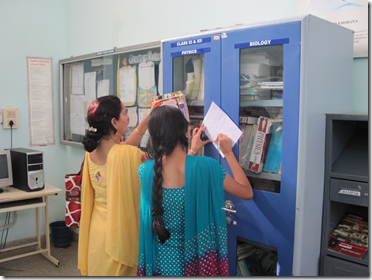
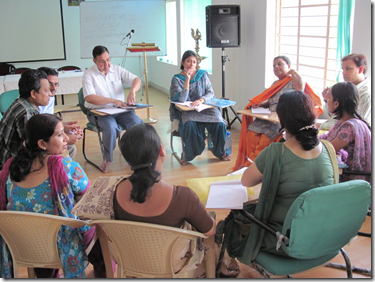





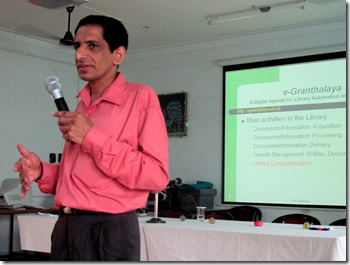

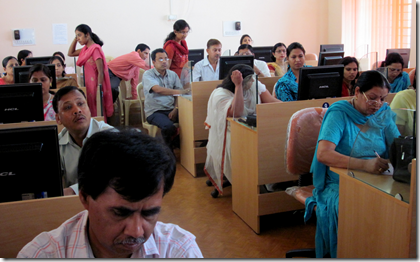








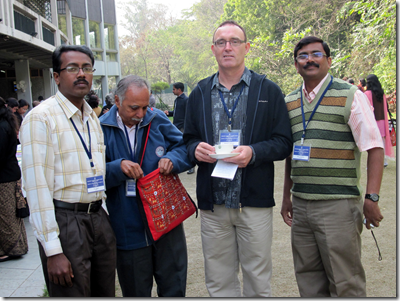

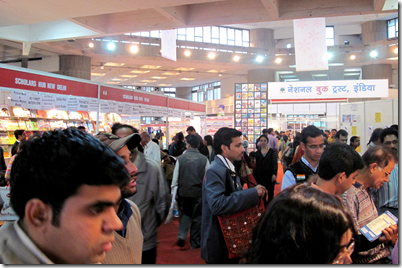

















Recent Comments